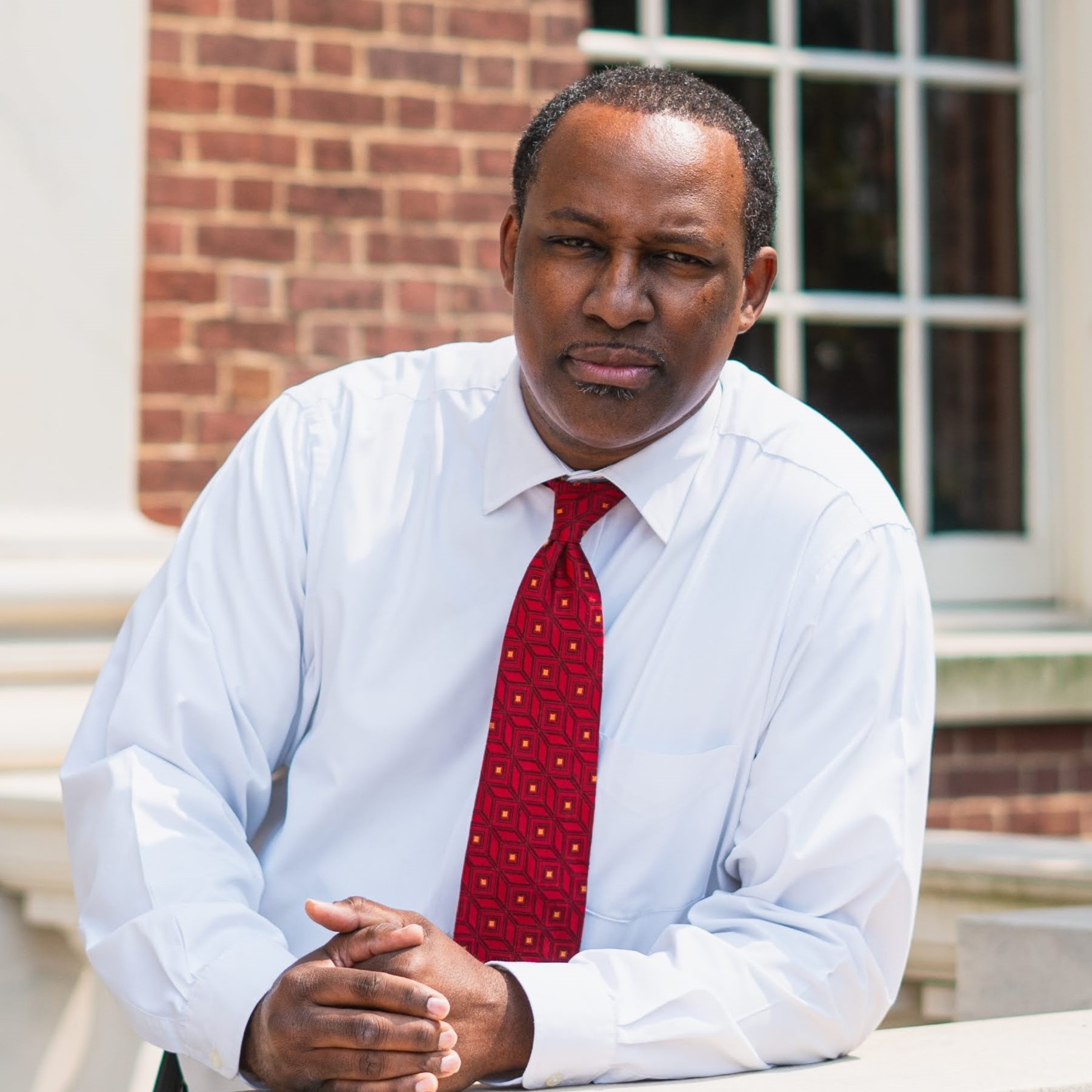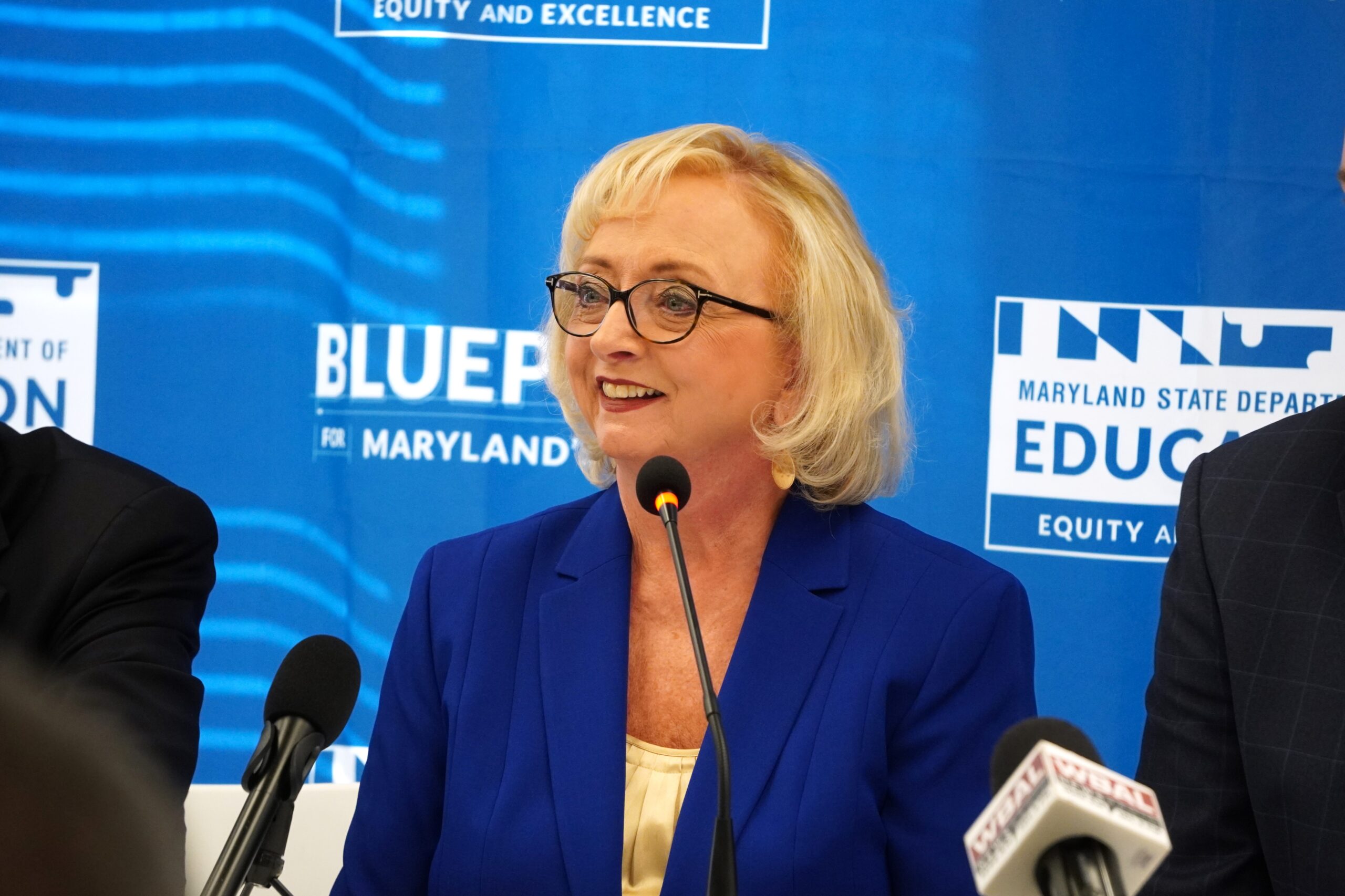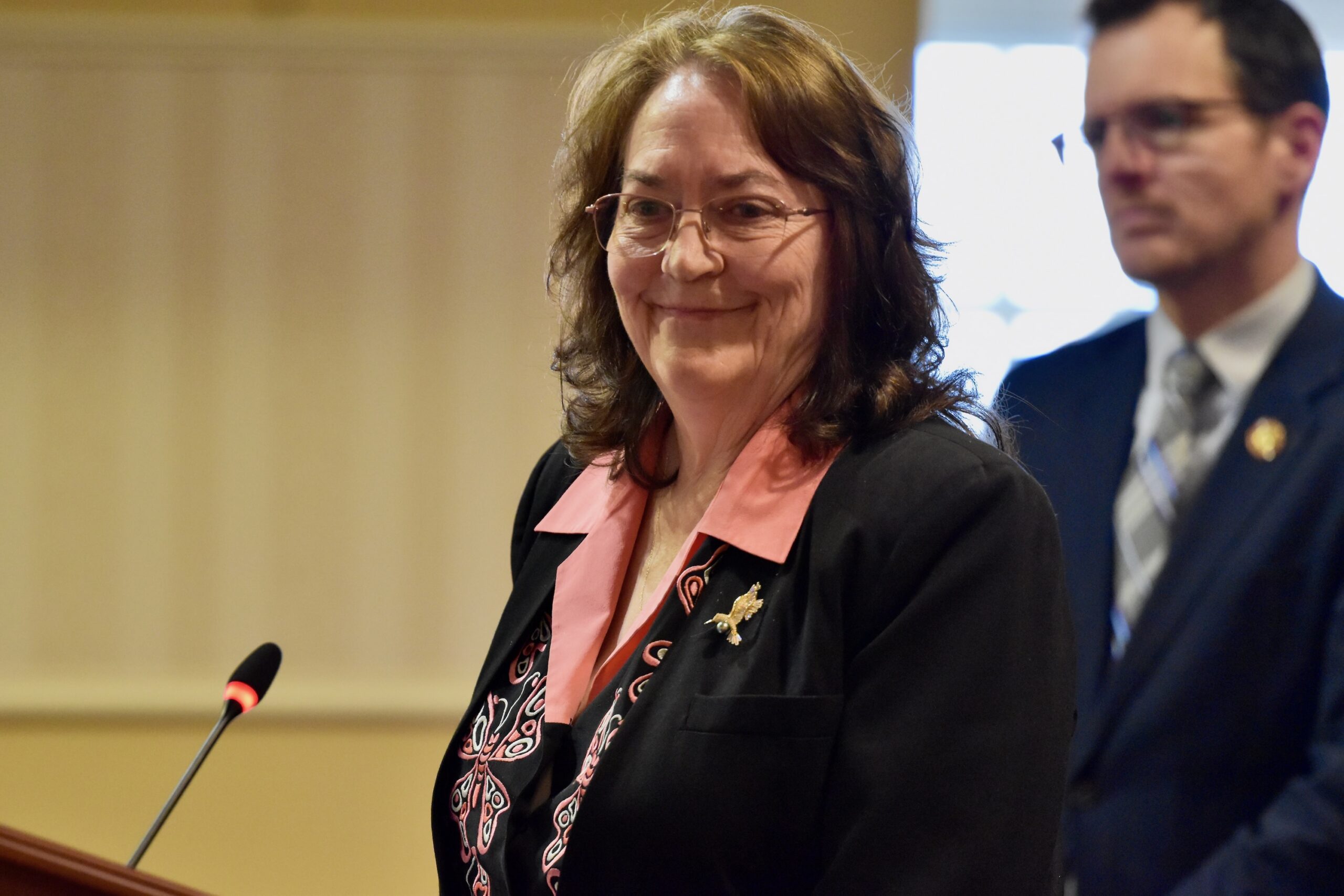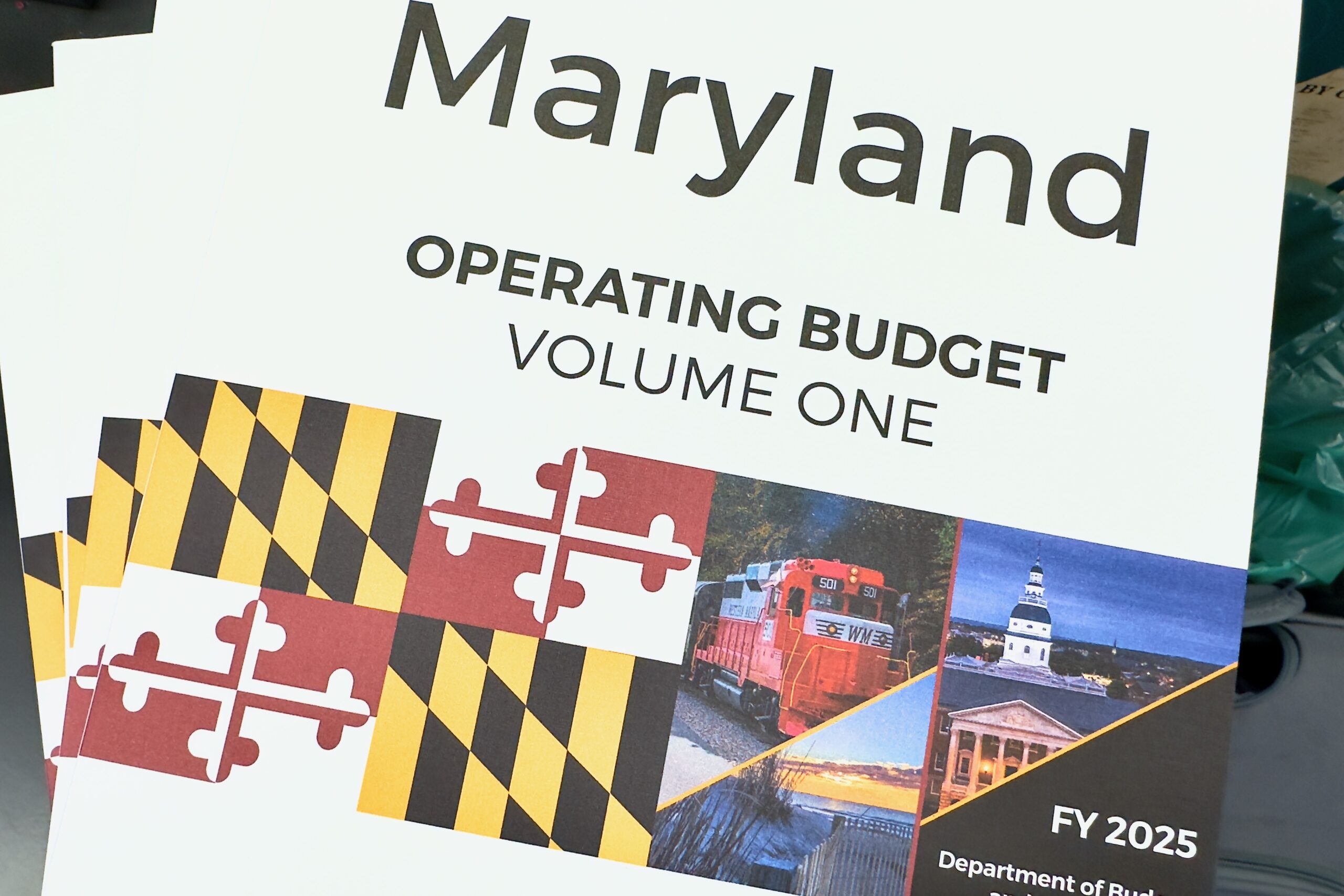Blueprint implementation continues: New plans reveal ongoing challenges for schools

When Maryland’s public school leaders submitted their first Blueprint for Maryland’s Future documents to state officials last year, part of the requirements were to identify any challenges they’d face meeting the mission of the education reform plan. These included hiring and retaining qualified teachers, expansion of prekindergarten to include 3- and 4-year-old children and incorporating college and career readiness programs.
In a second set of Blueprint documents submitted this month, officials of each school system provide an overview of the challenges they face in carrying out the education reform plan for the next year.
This reporting period comes as leaders in the Maryland General Assembly continue work on the $63 billion state budget. Legislative budget analysts have warned a budget deficit is looming starting in fiscal year 2026 at $1 billion and that, two years after that, it could increase to $3 billion.
Part of the reason for the anticipated deficit is fulfilling the requirements in the 10-year, $3.8 billion Blueprint plan.
“I don’t quite understand what’s the rush. It’s like they’re trying to pump money through the [education] system so fast,” Senate Minority Whip Justin Ready (R-Carroll and Frederick) said in an interview. “If we would just slow down the implementation some, it would be more sustainable financially for all of our counties and for the state.”
Ready said the overall Blueprint plan should incorporate accountability measures if certain requirements, such as making sure money is properly spent, aren’t met .
“It’s accountability for making sure you spend the money in the right places, but it’s not accountability for the results you’re getting,” he said. “It’d be great if we could sort of repurpose a little bit and say, ‘We’re still going to make a major investment every year,’ but let’s get it to where we can be sustainable with that…to make sure we get the right results for all this money.”
Cheryl Bost, president of the Maryland State Education Association, said public education has been historically underfunded. Bost had a message for some county government officials and school superintendents.
“Stop doing some of the things that you’re doing just because you’ve always done them and look at these, new innovative ways to deliver instruction,” she said in an interview. “So, it’s really evaluating what you’ll spend your money on, prioritizing and aligning with the Blueprint and making the investment. They can do it, but some of them don’t have the political will to do it.”
The Blueprint’s Accountability and Implementation Board (AIB) was created by the legislature to oversee the Blueprint plan implementation and approve all local school system plans.
A third set of documents due by May 1 requires local school officials to provide data on the Blueprint’s five priorities: early childhood education, hiring and retaining high-quality and diverse teachers, preparing students for college and technical careers, providing additional resources for students in need and governance and accountability.
A “Criteria of Success” checklist will be used to evaluate responses for each plan to receive approval.
In the Blueprint plans submitted this month on the AIB website, local school officials responded to at least five questions and prompts including this one: “Your district’s three greatest challenges to Blueprint implementation, including the rationale for selecting them, the specific initiatives/programs/strategies the district will implement to address them, and how your district will transform to implement these strategies effectively.”
From plans submitted by Maryland’s 24 local school districts, here are the top challenges identified by local school officials and some responses:
Allegany
— Designing school schedules and staffing to leverage the career ladder requirements.
— Developing strong core instruction and a MTSS (multi-tiered system of support) that provides support for all students.
— Recruiting and retaining teachers and leaders.
“Sustaining district-level initiatives across all schools is difficult because of staff retirements and turnover rates. The district must provide and sustain the Science of Reading training for teachers at both the elementary and secondary levels. Job embedded professional development and teacher collaboration is crucial so that up-front training is to be sustained. In addition, implementation of the new comprehensive literacy and math plans will be challenging as we consider the training needs, supports, and models of effective strategies necessary to effectively improve instructional practices.”
Anne Arundel
— Expansion of pre-kindergarten.
— Adequate and appropriate space needed for programs.
— Recruiting, training, and retaining high-quality and diverse educators to support full implementation.
“Anne Arundel County has yet to be able to partner with many private providers [for providing prekindergarten education]. Private providers routinely identify why they are not currently interested in partnering with AACPS for a mixed delivery system. [One reason includes] the current public-private partnership is not a profitable business model. Most Anne Arundel County childcare providers are at capacity with families paying full tuition that often exceeds the amount under Blueprint. With receiving less funding per child and having to meet the salary, benefits, and expenses to achieve [Maryland] EXCELS certification, private providers would make less money than they currently do.”
Baltimore City
— Structural inequities
— Insufficient funding
— Mismatch between expectations and incentives for partnerships.
“Implementing a law as comprehensive as the Blueprint for Maryland’s Future is going to be a herculean effort under the best of circumstances, but combined with the added complexities of pandemic recovery, delays that resulted in extremely limited pre-implementation planning time for districts, and the slow pace of regulations and guidance pertaining to the Blueprint, the challenges are amplified. The challenges…are primarily ones that emerge from structural problems or unintended consequences arising from the Blueprint Act itself.”
Baltimore County
— Expanding early childhood access for 3-year-old students.
— Implementing college and career readiness criteria for students who may not be on track to meet those standards.
— Recruiting and hiring teachers in critical need areas such as special education, mathematics and science.
“BCPS has identified the following factors impacting kindergarten readiness: 1) capacity building with private providers to expand early childhood programming for eligible students, 2) designing a more comprehensive public-private facility utilization plan to serve all eligible students in a mixed-delivery model of programming, and 3) expand[ing] opportunities for parents and child care providers to receive developmentally appropriate tools and resources aligned with kindergarten readiness in their community, prior to enrolling their student with BCPS.”
Calvert
— Strategically and meaningfully changing the structure of the school day to leverage the career ladder.
— Shifting mindsets and providing teachers with skills and resources to meet all students’ needs.
— Financial challenges
“The Blueprint calls upon districts to develop a career ladder that supports the reorganization of schools so that educators may engage in professional learning and peer collaboration and provide student-specific support to all students. The reorganization incorporates new roles for leaders and teachers, and a new system of professional development. The challenge is how to design this system, given multiple challenges (e.g., fiscal concerns, shifting mindsets that value traditional school structures and ways of working). Pragmatically, addressing this challenge involves multiple issues such as: instructional time requirements; course requirements; collective bargaining agreements, staffing and human resource capacity and availability.”
Caroline
— Funding
— Guidance
— Staffing
“In this context, it becomes imperative to identify these challenges, develop targeted strategies, and foster a culture of adaptability and collaboration to overcome hurdles and advance the Blueprint’s objectives. These three challenges were selected as the greatest challenges because they directly impact our progress towards reaching the goals of the Blueprint. Philosophically, we are excited about the promise of the Blueprint and are well-aligned with the priorities, but our biggest challenges are significant risks for us being able to achieve our goals.”
Carroll
— Professional learning
— Staffing
— System-wide continuous improvement
“Professional learning was identified as the primary challenge in our efforts at systemic transformation. Far too often professional learning in CCPS occurs as isolated events rather than ongoing, continuous training for improvement. All pillars are affected by the lack of professional learning opportunities for staff, and the lack of time devoted to training has become a significant hurdle in developing our workforce. The ongoing development of our staff is essential given the increased difficulty in hiring high-quality staff and the increase in students who are entering school with needs for educational supports (i.e., language supports and supports to address trauma).”
Cecil
— Funding and resource allocation
— Staffing and hiring
— Academics and instruction
“CCPS has been facing funding challenges for the past three years due to local government funding of education at the minimum maintenance of effort while also implementing the required statutes of the Blueprint for Maryland’s Future. CCPS was able to leverage COVID-19 relief funds to offset staffing and resource cuts from 2020-2024 in order to maintain staffing to meet the needs of all students. For [Fiscal Year 2025], the school system faces a funding cliff due to the sunsetting of federal relief funds and a lack of local funding to support all CCPS programs.”
Charles
— Workforce shortage
— 75/25 budget allocation for Blueprint reforms [which requires 75% of state and local contributions to follow the student and 25% of state and local contributions to go toward administrative functions]
— Making systematic changes
“The workforce shortage is a state and national trend. This impacts the district’s ability to fill openings in all schools, but specifically impacts our lowest performing schools. The scarcity of certified staff in Maryland has hindered the ability of CCPS to fill all certificated positions. The teacher shortage poses a significant challenge to implementing the Blueprint because it requires a well-trained and adequately staffed workforce to execute the pillars. With the shortage of staff to implement the work, providing the necessary supports to students, including individualized instruction, expanding learning opportunities, and other evidence-based measures can become difficult.”
Dorchester
— Professional development
— Certification
— Funding
“Professional development, the lifeblood of the any organization, has the potential to move the needle for student success. In the past, there has not been consistent professional learning across the board. Factors such as staffing, funding, the availability of resources and other structures have hampered efforts to provide professional learning for faculty and staff. As is the case, student achievement has been impacted on all levels especially in ELA (English Language Arts) and math. Because the district is keenly aware of professional development and its impact, school leaders have become more intentional in providing professional development particularly for the upcoming school year.”
Frederick
— PAR (Peer Assistance and Review) program for new teachers
— NBC (National Board Certified) expansion
— Dual enrollment
“These expenses, most of which rely on the local share, require us to make difficult decisions on how we meet the Blueprint requirements. This is coupled with managing real and pressing interests from our employees and community members in other areas such as funding for employee raises, special education program offerings, class size, bell times, and other key topics that fall outside of the Blueprint. Our strategy remains building the budget with prioritization for Blueprint-related items.”
Garrett
— Establishing a mixed delivery system for early childhood.
— Incentivizing teachers to opt into the career ladder.
— Meaningfully engaging stakeholders
“GCPS has made great progress with public early childhood programming by providing universal Pre-K 4 opportunities and adding three 3-year-old GCPS/Head Start collaborative classrooms. However, Garrett County still has zero eligible private providers offering Pre-K slots. In order to attain Blueprint outcomes, a mixed delivery system is required. Following a parent focus group, an increased need was identified for additional enrollment slots within the local school area. Identifying or expanding private/public enrollment slots through a mixed delivery system will meet this need.”
Harford
— Resource allocation
— Meaningful stakeholder engagement
— Realizing equitable outcomes
“One of the primary concerns expressed by stakeholders was whether HCPS would have adequate resources to carry out all aspects of the plan and hold staff and leaders accountable for the proposed changes. The ambitious scope of the Blueprint raised doubts among respondents about the sufficiency of funding, staffing, and physical space to support various initiatives, such as the introduction of new Early Childhood Education (ECE) programming. Furthermore, stakeholders expressed apprehension about teacher compensation, emphasizing its importance in recruiting and retaining high-quality educators. This concern underscored the broader issue of resource allocation within the HCPS.”
Howard
— Reallocation of funding
— Expanding prekindergarten
— Career ladder
“State law defines the funding formulas, which provide more than 95% of operating revenues for HCPSS. Increases from state aid are directly linked to required initiatives, but do not account for post pandemic cost increases and overall inflation. Local revenue streams from the formulas do not grow proportionately with forecasted expenses because they are primarily responsive to changes in enrollment and not linked to the cost of services. These factors have caused the superintendent’s proposed budget to include cuts to existing services to fund mandates and system priorities.”
Kent
— Funding and resource allocation
— Appropriate staffing
— Managing community and stakeholder perceptions and partnerships
“KCPS is committed to creating Blueprint programs that align to the needs of students, staff, and the community. Community engagement and partnerships are critical to the success of Blueprint implementation. Unfortunately, efforts to engage the community about Blueprint programs have not always been productive. KCPS hosted information sessions on pre-K expansion, post-CCR pathways, and the Blueprint, and low community engagement was noted at these events. Upon publishing its Blueprint implementation plan in 2023, there was also a low level of community feedback on the plan.”
Montgomery
— Sustainable funding
— Space for prekindergarten and other program expansion
— Providing information, support, resources engagement with all internal and external stakeholders
“Sustainable funding was identified as a challenge across all pillars. MCPS implements the Blueprint using a local and state share to fund initiatives. Due to wealth equalization formulas, the local Montgomery County share is increased. The increasing fixed costs of services and goods along with meeting employee compensation and program implementation costs, is very impactful to the Operating Budget. Additional Blueprint implementation costs such as the requirement for schools to conduct a behavioral health screening for students at a significant cost to purchase the instrument, staffing to score the instrument and make referrals.”
Prince George’s
— Using resources strategically to support the Blueprint plan.
— Communicating with employees the ways in which their work already aligns with the Blueprint.
— Hiring and retaining qualified and diverse teachers and leaders.
“In terms of retaining teachers and leaders, the district is reimagining opportunities for additional mentorships, coaching relationships and professional development during the school day, which has been a challenge due to the shortage of substitute teachers. PGCPS will continue to explore alternative professional development solutions, such as live virtual training modules and/or asynchronous online modules that can be completed via after-school workshops or weekend sessions, to offer flexibility for teachers to participate in professional development activities without disrupting instructional time. This also includes continued professional learning for educators working with multilingual learners and children receiving special education services.”
Queen Anne’s
— Funding
— Prekindergarten expansion
— High-quality and diverse teachers and leaders
“Our reality is that QACPS could have less money in our overall, unrestricted operating budget in [Fiscal Year] 2025. Our leadership is collaborating and strategically planning our financial well-being with our county administration to request above MOE (maintenance of effort) funding. Addressing the funding challenge often requires assessing the feasibility of the new initiative, as well as a clear understanding of organizational priorities and constraints. Additionally, seeking alternative funding sources, such as grants, partnerships, or cost-sharing arrangements, may help overcome funding limitations.”
St. Mary’s
— Funding
— Implementation of the career ladder
— Overall education services and programs
“The ubiquitous challenge inherent in meeting Blueprint goals is in the fact that the Blueprint is silent on supporting all else, i.e., the arts, athletics, enrichment and after-school programming, transportation, facilities, health care, etc. These elements of school are necessary and imperative in supporting the whole child. With specific allocations of foundational funding and directive elements to Blueprint goals, the system must determine which elements of the whole educational experience must be redesigned, rethought, or cut to meet the mandates of Blueprint statutes.”
Somerset
— Staffing
— College and career readiness
— Social emotional learning
“Staffing is by far [the] largest issue with approximately 30% of staff non-tenured and/or non-licensed. While content is generally less intense at the early elementary level, middle school and high school content becomes very specialized and technical. The teacher shortage, and shortage of teachers with higher level mathematics and science knowledge is one of the largest contributing factors to our high non-tenured and non-certified numbers. Teacher turnover rates have led to an extremely young teacher workforce in SCPS. This means that many of them are having children and going on maternity leave, often at the same time.”
Talbot
— Mixed delivery and expansion of prekindergarten
— Recruiting highly qualified staff and building leadership capacity
— Resource reallocation and funding Blueprint mandates
“As we explore partnerships with private providers, we continuously face challenges with securing facility space for 3-year-old classrooms and assisting private providers with staffing and accreditation requirements. In our rural district, there are very few private childcare providers, with most having extensive waiting lists for entry. Private providers have also indicated that the funding for a mixed-delivery system does not coincide with their current business model and space availability. While TCPS is currently reviewing district infrastructure to support Pre-K expansion in our own facilities, we are also challenged with space and staffing.”
Washington
— Funding
— Staffing
— Academics/instruction
“Despite changes to the budgeting process and diligent cost-cutting measures at the district and school levels, additional financial support and funding are needed to meet the goals of the Blueprint and the evolving needs of staff and students. Resources earmarked for schools at their current allocation levels will not support the current or ongoing strategies needed to be successful in the post-pandemic environment. Exacerbated by our local funding context, WCPS will not be able to maintain services at pre-pandemic levels, which is made more difficult by the impact of inflation on prices for goods and services and employee compensation.”
Wicomico
— High-quality, skilled, licensed and diverse staff needed.
— Capacity to serve more prekindergarten students and expand Judy Center sites.
— Apprenticeship opportunities
“Identifying the need for high-quality, skilled, licensed, and diverse staff presents a significant challenge within our school system, compounded by the existing teacher shortage and various interconnected factors. Despite our active participation in Grow Your Own (GYO) programs, progress toward cultivating a diverse staff has been slower than desired. The decreasing number of diverse graduates from nearby university programs exacerbates this delay. Also, our ability to address the growing demands of our ESOL (English for Speakers of Other Languages) student population is hampered by limited funding, impeding our capacity to recruit and retain sufficient personnel.”
Worcester
— Expand publicly funded full-day prekindergarten.
— Establish a new educator career ladder and professional development system.
— Enhance student health services
“Worcester childcare providers have communicated receiving a lower amount than what it regularly charges is a nonstarter. Furthermore, childcare centers were required to have received a Maryland EXCELS Level 5 endorsement and private-religious childcare centers were deemed ineligible to apply for Expansion Grant and Blueprint monies. Rural communities like Worcester County have a shortage of childcare sites; therefore, it’s imperative to advocate to [the Maryland State Department of Education] for it to modify the amount of work or make the work more manageable to allow smaller childcare centers with less staffing to earn the proper EXCELS endorsement, making them eligible for these funding opportunities.”




 Creative Commons Attribution
Creative Commons Attribution